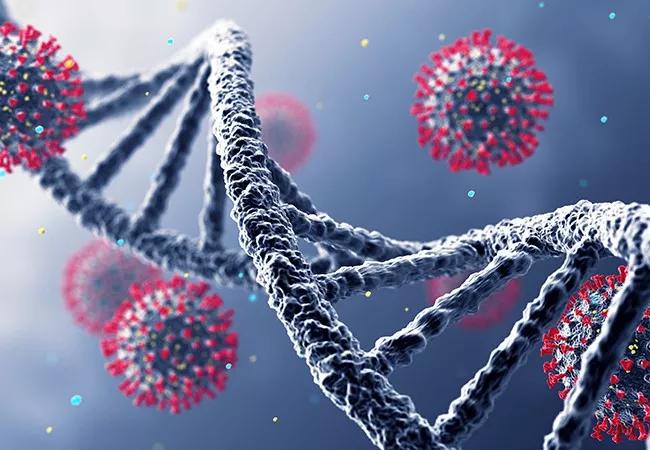What a male sex hormone involved in prostate cancer might reveal about COVID-19

Researchers at Cleveland Clinic are in search of the biological reason behind why men are more likely than women to develop COVID-19 and typically have more severe disease.
Advertisement
Cleveland Clinic is a non-profit academic medical center. Advertising on our site helps support our mission. We do not endorse non-Cleveland Clinic products or services. Policy
According to new study results published in Scientific Reports, levels of the protein ACE2 (angiotensin-converting enzyme 2) are modestly higher in human males versus females and preclinical models. ACE2, along with the protein TMPRSS2 (transmembrane serine protease 2), are the main human entry points for SARS-CoV-2, the virus that causes COVID-19, leading researchers to wonder if sex-based differences in expression levels may offer insights into why men have worse COVID-19-related disease and outcomes than women.
TMPRSS2 (the gene that encodes the TMPRSS2 protein) has been linked to prostate cancer. Male sex hormones called androgens regulate TMPRSS2 gene expression and are involved in the growth and spread of prostate cancer.
“Since androgens are much higher in males, the general question was whether androgens might explain sex-related differences in COVID-19,” explained Nima Sharifi, MD, Director of the Cleveland Clinic Genitourinary Malignancies Research Center and lead author on the study. “Although prostate cancer research shows that androgen receptors regulate TMPRSS2 in the prostate, we do not yet understand sex-based differences in androgen receptor expression in the lungs or any of the receptor’s downstream targets in respiratory tissues.”
In this study, Dr. Sharifi’s team compared ACE2 and TMPRSS2 expression in the lung tissue of male versus female patients, and male versus female mouse models. While the researchers found no difference in male versus female expression of TMPRSS2, male preclinical models and male patients who smoked expressed higher levels of ACE2 in the lungs than their female counterparts.
Advertisement
They treated the mice with an anti-androgen drug called enzalutamide to determine if ACE2 or TMPRSS2 levels changed as a result. TMPRSS2 levels didn’t change, but blocking androgen receptors did result in modestly reduced ACE2 expression.
“Based on our findings, we observed two things. First, it appears that ACE2 expression in the lungs may be at least partially regulated by androgens, which could have implications for SARS-CoV-2 infection, although these are rather modest changes,” said Dr. Sharifi. “We also learned that levels of ACE2—the primary human entry point for the virus—are different between male and female smokers.”
More research will be necessary to determine if this sex-based variance in ACE2 levels is observed among COVID-19 patients, and will be tested in several ongoing clinical trials.
Mehdi Baratchian, PhD, a postdoctoral fellow in Dr. Sharifi’s lab, was first author on the study, which was supported by the National Cancer Institute and Prostate Cancer Foundation.
Editor’s note: This article was originally published here by Cleveland Clinic Lerner Research Institute.
Advertisement
Advertisement

First full characterization of kidney microbiome unlocks potential to prevent kidney stones

Researchers identify potential path to retaining chemo sensitivity

Large-scale joint study links elevated TMAO blood levels and chronic kidney disease risk over time

Investigators are developing a deep learning model to predict health outcomes in ICUs.

Preclinical work promises large-scale data with minimal bias to inform development of clinical tests

Cleveland Clinic researchers pursue answers on basic science and clinical fronts

Study suggests sex-specific pathways show potential for sex-specific therapeutic approaches

Cleveland Clinic launches Quantum Innovation Catalyzer Program to help start-up companies access advanced research technology